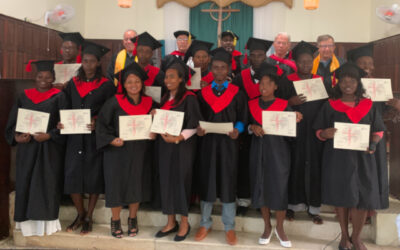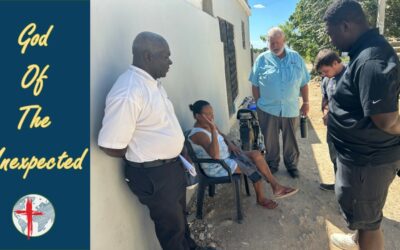The Essential Nature of the Church
Session 1 – An Introduction
I. Background for Matthew 16:13-20
A. Structure of Matthew’s Gospel
1. Jesus’ Galilean ministry has just ended
2. The people have rejected Jesus – each Gospel notes the rejection of Jesus by the Jewish people
a. Matthew 15:23-28 – In His encounter with the Gentile woman, Jesus foretold the end of His ministry to the Jews
3. The “times of the Gentiles” was about to begin (see Luke 21:24)
B. Geography – All details of Scripture are important!
1. Caesarea Philippi – the setting is significant – additional study link
a. Remote area – away from Jerusalem, Jews, Scribes, Pharisees, the Temple, etc.
b. Home of Philip, tetrarch of Rome – son of Herod
c. Near Mt. Hermon – to reach Caesarea Philippi, Jesus led His disciples on a walk through Jewish history, i.e. the history of God’s redemptive activity
i. Waters of Merom – place of Joshua’s final battle in conquering the Promised Land
ii. Past city of Kadesh Naphtali – ancient city of refuge, see Judges 4:6 and forward
d. Cave in Caesarea Philippi is upper source of the Jordan River
e. Approximately 1,150 feet above sea level, nestled among three valleys
f. Area was formerly known as Paneas – in honor of pagan god Pan – it was a decidedly Gentile area!
i. Philip changed name to Caesarea Philippi when he became the governing Roman tetrarch over this area
C. This setting was significant to Jesus for several reasons
1. The Church would welcome the Gentiles into God’s redemptive plan
2. Peter made his confession of faith on the boundary of Jewish territory
3. Jesus went to the edge of Jewish territory to reject Israel (He came to His own and His own did not receive Him – John 1:11) and announce the coming of His Church.
D. Philip’s castle fortress: like Herod’s Machaerus (Masada)
1. Located above the city – site built on during the Crusades
a. Today is known as Nimrod’s Fortress – additional study link
2. Virtually impregnable – built on sheer walls of ROCK!!!
a. See coming comments regarding: Upon this Rock…
3. Anyone in this area could see this castle fortress – A Divine Object Lesson
a. It is likely Jesus’ disciples could see this castle when Jesus said, Upon this rock I will build My Church and the gates of hell will not prevail against it.
i. Like standing by fig tree and giving a lesson on the seasons, or standing by a field to say disciples needed to pray to the Lord of the Harvest, this was a graphic image.
II. The Law of First Mention
A. Principle of Biblical interpretation which states: the first mention or occurrence of a subject in Scripture establishes a divine pattern, with that subject remaining unchanged in the mind of God throughout Scripture. – additional study link
1. Subjects are often introduced in embryonic form
a. Genesis is often called the ‘seedbed’ of Biblical doctrine
2. God’s revelation in Scripture is progressive
a. Scripture builds upon previous revelations of doctrine
b. Genesis 1:1 begins the Biblical record and in Genesis 1:2 we see progressive revelation on display
i. Verse 1 – God (singular) created
ii. Verse 2 – …the Spirit of God hovered over the waters.
iii. Genesis 1:26 – Let us (plural pronoun) make Man...
iv. John 1:3 – Nothing was made without Jesus: God the Son
c. Beginning with the what we know as the Trinity, Scripture gradually reveals ideas and doctrines to us
B. Three More Examples
1. First Prophecy – And I will put enmity between you and the woman, and between your seed and her seed; He shall bruise you on the head, and you shall bruise Him on the heel, Genesis 3:15.
a. This prophecy is the beginning point of God’s redemptive work
b. Jesus, the One bruised on His heel, will be victorious over Satan (the one to whom God spoke these words)
c. The woman’s “seed” – prophecy of the “Seed’s” divine conception, divine origin, and necessitates a literal virgin birth
d. Indicates the course of human history – strife between those who follow Christ (the “seed” of the Woman) and those who follow Satan (“your” seed).
e. God’s promises to bless Abraham, and to bless all the nations of the earth through him, represent a growing understanding of the first prophecy (see Genesis 12, 13, 14)
2. Cities of Jerusalem and Babylon
a. Jerusalem is first mentioned in Genesis 14:18 (Salem) and is always the city of God (Zion).
i. Melchizedek – King of Peace – see Hebrews 7:2
b. Babylon is first mentioned in Genesis 10:10 in connection with Nimrod and rebellion.
i. The name Nimrod means: let’s rebel
c. Both cities are seen in the same manner throughout Scripture – all the way to Revelation
3. Cherubim – heavenly, created beings
a. First seen & mentioned in Genesis 3
b. From this we know God created beings that serve Him on earth
c. Not until God instructed Moses on the construction of the Ark of the Covenant do we learn the role of the Cherubim in the Garden of Eden
i. God told Moses: I will meet with you between the Cherubim – Exodus 25:22
ii. God’s mercy is displayed “between the Cherubim” – Hebrews 9
d. Some believe God’s Cherubim and the flaming sword were simply to keep Adam and Eve out of the Garden
i. Applying the Law of First Mention, the purpose is much greater
ii. ‘Between the Cherubim’ is a place of worship – Adam and Eve continued to ‘meet with God’ at the entrance
iii. The sword had two purposes: To simultaneously block the entrance but to keep Satan from blocking the path to worship
C. The Church will be similarly revealed and our knowledge expanded






0 Comments